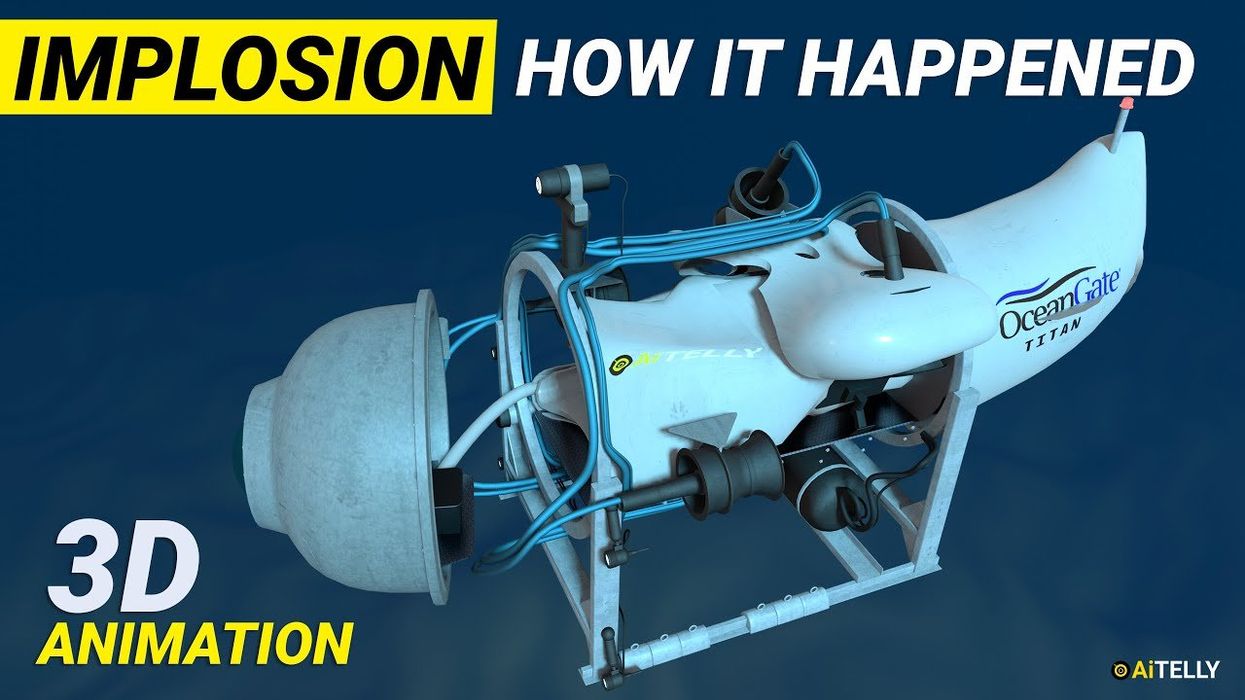Viral
Alex Daniel
Jul 18, 2023
Implosion Titan Oceangate How it Happened | Submersible Submarine Parts #3d
It’s been nearly a month since the Titan submarine tragically imploded on its descent down to the wreck of the Titanic, but social media’s morbid fascination with the event does not seem to have faded.
A video outlining how the submersible imploded has gone viral, wracking up more than 10 million views since it was posted on YouTube at the start of July. The explainer goes into detail about how implosions differ from explosions, and what the disaster would have looked like.
Titan began its journey towards the wreck of the cruise liner on June 18. Shortly after, it lost contact with people on the surface. The US Coast Guard later revealed the vessel had suffered a “catastrophic implosion”, after deep-sea robots found debris on 22 June. Officials later said “presumed human remains” were recovered from the site.
Sign up to our free Indy100 weekly newsletter
The video simulating the implosion was posted by AiTelly, an account which specialises in “3D engineering animations”.
The narrator explains that in the Titan’s case, the implosion was caused by “high hydro-static pressure of the surrounding water, which happened within a fraction of a millisecond”.
“At the depth the Titanic rests, there is around 5,600 pounds-per-square inch of pressure. That’s almost 400 times the pressure we experience on the surface.
“As the submersible is deep in the ocean it experiences the force on its surface due to the water pressure. When this force becomes larger than the force [the] hull can withstand, the vessel implodes violently.”
The animation shows the submersible suddenly bucking under the pressure, noting that the debris was found just 1,600 feet from the Titanic wreck, in five different parts.
It said that a possible design flaw with the Titan was that it used “mostly carbon fibres, which have the advantage of being lighter than titanium or steel”.
However, it added: “The properties of carbon fibres for deep sea applications are however not that well understood. It can crack and break suddenly.”
The victims were Hamish Harding, 58, Shahzada Dawood, 48, and his son Suleman Dawood, 19, Paul-Henri Nargeolet, 77, and Stockton Rush, 61.
Social media users responded to the video in their droves. One person said: “Who in their right mind would consider going into one of those things? No matter how safe, you have to be pretty brave.”
Another person said: “The whole world is on a morbid curiosity kick with this sub.”
One commenter added: “The moments before the OceanGate imploded must’ve been a really scary and harrowing experience for the 5 people involved.”
Have your say in our news democracy. Click the upvote icon at the top of the page to help raise this article through the indy100 rankings.
Top 100
The Conversation (0)














